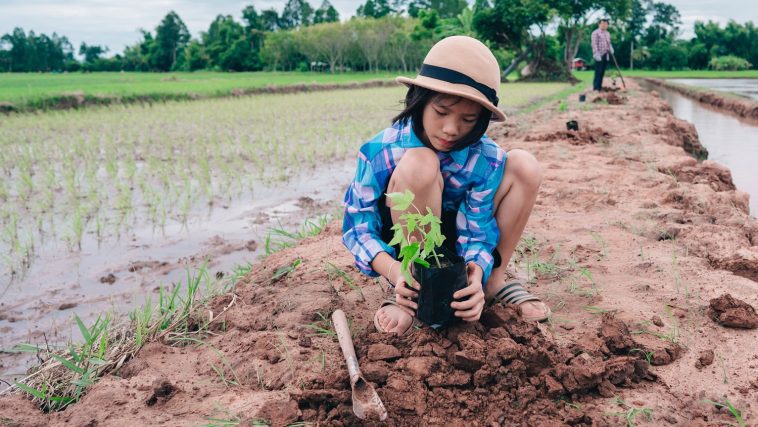[Originally published as Dirt Can Be Good For Children]
There has been a noticeable rise in allergic diseases (like asthma), especially in industrialized nations.¹ Several hypotheses have been suggested to account for this fact, but the one that seems to have the most evidence stacking up in its favor is the hygiene hypothesis.
This hypothesis suggests that many children who live in industrialized nations are raised in an environment that is just too clean. Because of this, they are not exposed to infectious agents and parasites that properly “train” their immune systems. In addition, they miss out on some of the good bacteria and fungi that would take up residence in their body and support their immune system. As a result, the natural development of the immune system is stunted, and the body doesn’t know how to properly respond to certain foreign agents.
Several studies have shown a relationship between the cleanliness of a child’s environment and the child’s risk of developing an allergic disease. For example, studies have shown that children who grow up in rural settings are less likely to develop allergic diseases than those who grow up in urban settings.² Even within rural settings, there is a difference. Children who grow up on farms seem to be the most protected against asthma and other allergic diseases.³
While there is a lot of indirect evidence for the hygiene hypothesis, a biological mechanism for why a “dirty” environment helps protect children against allergic diseases has been lacking. A recent study from Europe, however, has changed that.4
In the study, the authors first exposed mice to farm dust. They then showed that the exposed mice weren’t allergic to dust mites, one of the leading causes of allergy among people. In studying the biochemistry of the mice, they found that when the mice were exposed to the farm dust, their bodies responded by making a particular protein (called A20) in the mucous membranes of the lungs. That protein reduced the strength of the immune reaction caused by the dust mites, protecting the mice from an allergic reaction. When the authors disabled the protein, the mice became allergic to the dust mites.
Of course, mice aren’t people, so the authors had to make sure these results were applicable to children. They examined lung tissue from healthy children, children with mild asthma, and children with severe asthma. They found that the production of A20 was highest in the healthy children, lower in the children with mild asthma, and even lower in the children with severe asthma.
Finally, the authors studied 1,707 children whose farm exposure was known from a previous study. Most of the children who grew up on farms or were regularly exposed to farming did not have allergy problems, but some of them did. The authors showed that the ones who did have allergy problems were very likely to have a variant of the A20 protein, which was much less efficient at reducing the reaction of the mucous membranes in the lung. In the end, then, this study seems to provide a direct mechanism to explain how frequent exposure to farms in childhood reduces a child’s risk of developing allergic diseases.
When you combine all the studies that have been done so far, it seems clear that growing up in too clean of an environment might be harmful to a child’s immune development. Children should be allowed to get dirty. It seems they were designed to do just that. Of course, growing up in too dirty of an environment can also be unhealthy, so a balance must be reached. As my mother always said, “A home should be clean enough to be healthy, but dirty enough to be happy.”
REFERENCES
- Masoli M, Fabian D, Holt S, and Beasley R, “The global burden of asthma: executive summary of the GINA Dissemination Committee report,” Allergy 59:469–78, 2004.
- Holger Garn and Harald Renz, “Epidemiological and immunological evidence for the hygiene hypothesis,” Immunobiology 212:441–452, 2007.
- S. Illi, M. Depner, J. Genuneit, E. Horak, G. Loss, C. Strunz-Lehner, G. Büchele, A. Boznanski, H. Danielewicz, P. Cullinan, D. Heederik, C. Braun-Fahrländer, and E. von Mutius, GABRIELA Study Group, “Protection from childhood asthma and allergy in alpine farm environments,” Journal of Allergy and Clinical Immunology, 129:1470–1477, 2012
- Martijn J. Schuijs, Monique A. Willart, Karl Vergote1, Delphine Gras, Kim Deswarte, Markus J. Ege, Filipe Branco Madeira, Rudi Beyaert, Geert van Loo, Franz Bracher, Erika von Mutius, Pascal Chanez, Bart N. Lambrecht, and Hamida Hammad, “Farm dust and endotoxin protect against allergy through A20 induction in lung epithelial cells,” Science 349:1106-1110, 2015.






